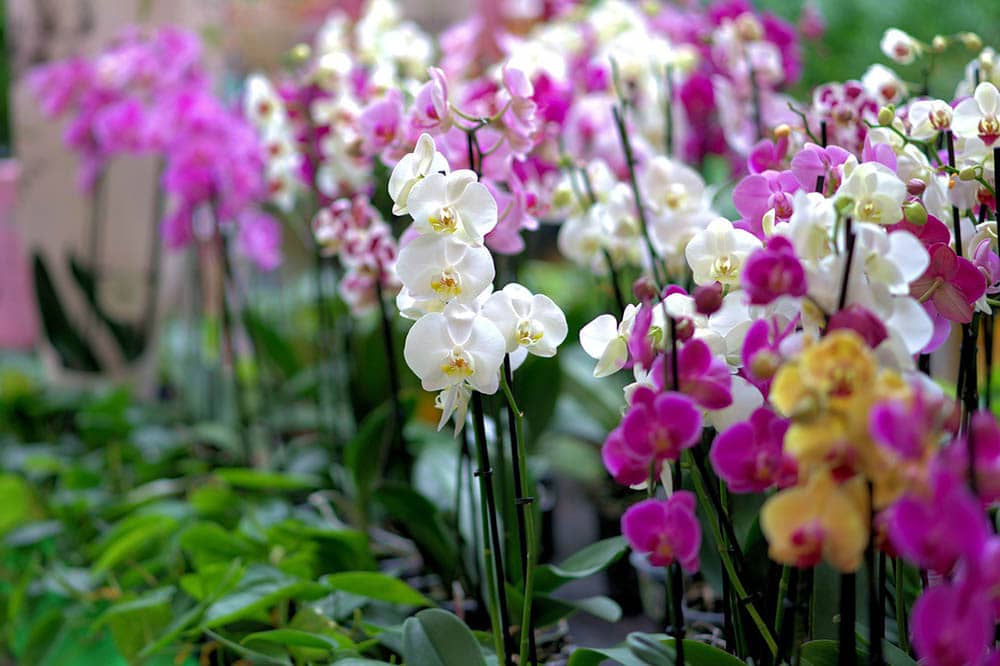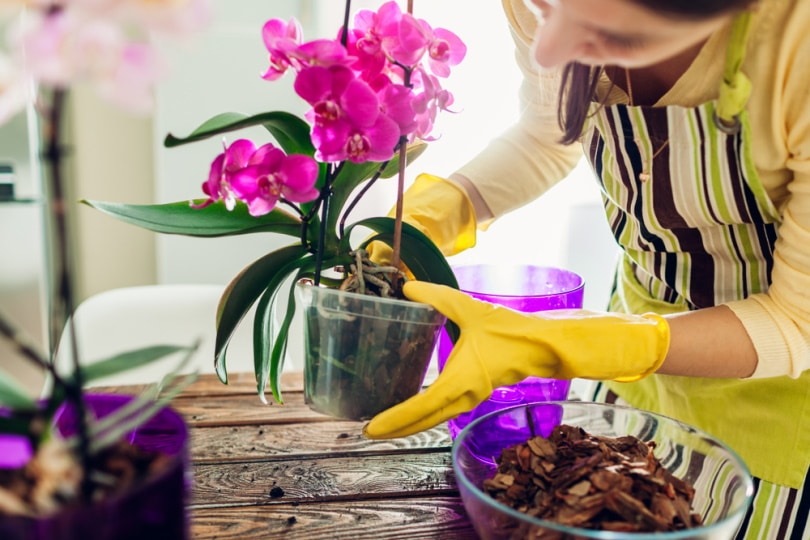When Do Orchids Bloom? Tips, Facts & FAQ
-
Pete Ortiz
- Last updated:

Orchids are a popular and beautiful flower to grow, with many people considering them exotic and rare because of their unique blooms and interesting growing habits. And while there are wide varieties of orchids, each with its own blooming time, most flower in the fall, while others in winter or spring.
Generally, orchid blooms can be seen throughout the year in tropical regions where they grow naturally. However, you may have to wait until spring or summer when temperatures are warmer in colder climates, to see your orchid bloom.
How Long Does a Bloom Season Last?
Despite the season and region, orchid species differ in blooming frequency and how long the blooming season lasts. Some orchids require little care and will flower for between 2 and 4 months, while others flower twice a year.
On the other hand, some orchids’ bloom season lasts a week while others for months, but to prolong the season avoid stressing the plant, maintain a good watering routine, and place it in a cool spot.

Orchid Care Tips
Orchids grow best in bright, indirect light with some humidity. They need a loose, well-draining growing medium high in organic matter such as bark chips or sphagnum moss.
Here are some tips on how to care for your orchid.
Water
Orchids like to dry out a little between waterings, so don’t keep them soggy wet. Water your plant when it’s dry to the touch on top of its compost mix. Don’t let water sit in the crown of your orchid after watering it because this can cause root rot.
Repotting
Repotting is usually necessary every year or two because the roots will become crowded and start to rot if not spread out. The best time to repot an orchid is after flowering or when there is new growth.
Pruning
It is crucial to regularly prune your orchid’s leaves so they don’t become too long and straggly looking. This will help keep its appearance attractive while keeping it healthy at the same time.
Light
Orchids need light but not direct sunlight. For optimum light, place your plants in an east or south-facing window. North-facing windows are too dark, while west-facing ones are too hot, eventually interfering with their blooming patterns.

Why Orchids Fail to Bloom and What to Do
Orchids are a favorite among gardeners and orchid enthusiasts. They are beautiful, delicate, and unique flowers that can be grown in nearly any environment.
However, there are times when orchids do not bloom, which can be very frustrating. The reasons for this can vary, but the solution is simple, as explained below.
Light
Just like any other plant, orchids cannot do without light. In fact, light is the primary reason why your orchid may fail to bloom. Generally, if your plant does not receive enough light, it will become spindly and weak, thus lacking enough energy to bloom. Nevertheless, these plants can’t handle too much of it, especially if it is direct sun.
The best way to ensure that your orchid receives enough light is to place it in an area with plenty of natural sunlight, but not directly. If this is impossible, you may need to purchase artificial lights for the plant. You may opt to place it near windows or provide some shade to seal off the direct sunlight.
Root Problem
Roots are the nutrient-absorbing parts of the plant. And if there is a problem, it means the orchid is starved or malnourished and thus lacks the energy to produce flowers. Often, the problem arises because of a lack of repotting or overwatering.
If you do not repot your orchid as required, the roots become squeezed and thus can’t adequately feed. Similarly, overwatering makes the roots suffocate as they need to breathe. The remedy is to repot your plant as frequently as possible and purchase suitable orchid mixes.
Natural Stimuli
Plants have an “inclination” to respond to different stimuli and respond accordingly. And for orchids, light and temperature are the common ones. Some species will react to temperature and bloom while others react to light.
This may also explain the different blooming patterns and cycles for the species. Temperature-responsive ones will bloom in fall because the temperature drop signals an end to the growing season. On the other hand, light-responsive ones will bloom when there is sufficient light.
Therefore, if you grow these two types, you must know their stimuli. For the light-responding varieties, you can summer it to induce blooming, while for the temperature responders, you can alter the temperatures to help the plant bloom.
Season
As seen, orchids bloom at different times of the year. Whereas some negative factors inhibit blooming, not all lack of blooming should worry you.
This is because orchids have dormant seasons when they do not bloom. Some bloom more frequently than others, but most grow vigorously during summer and bloom either in fall, winter, or spring.
There is no real remedy for this. The vital thing to do is to know your species’ blooming cycle and season. With this information, you can avoid worrying about your orchid not blooming. Further, if you want frequently blooming orchids, go for Phalaenopsis, but if not, Cattleya or Dendrobium will be ideal.

What to Do When Flowers Fall off the Orchid
An orchid’s flower can fall for different reasons. Depending on the reason, you have three options. You can clip the flower spike at the plant’s base, cut the stem to a node, or remove the flower part.
Clipping at the base is the best option if the stems have started turning brown or yellow. This is because it signals the plant to produce more roots, thus more chances of flowering the next time.
How to Help Your Orchids Rebloom
These elegant plants have a dormancy period lasting between 6 and 9 months. This is a resting stage where it regains energy to rebloom. But if 9 months or so elapse and nothing is happening, here are a few tips to follow.
- Fertilize your plants once the dormancy period starts. You can opt for a monthly or weekly program with suitable fertilizers.
- Keep your orchid in a cool spot, probably between 55 and 65 degrees Fahrenheit until you spot a new flower spike.
- Let the plant attain an average of 5 inches in height and move it. If no spike has appeared, try changing the plant’s spot to an area with more light.
In Conclusion
Orchids are a beautiful addition to any home. They come in many different colors and sizes, so there is sure to be one that will match your decor perfectly. If you have an orchid that has stopped blooming, you can do a few things to get it back on track.
- Related Read: Is My Orchid Dead (6 Signs to Look For)
Featured Image Credit: Andreas Lischka, Pixabay
Contents



